|
TennisOne Lessons Acquiring the Essentials of the Serve Feisal Hassan In previous articles on the essentials of shot making, I broke the essentials of any tennis stroke into four stages:
In this article, I’d like to look at these four stages as they would pertain to the serve and how to acquire these skills.
Stage 1: Seeing the Ball When serving, a player needs to ensure they are watching the ball in order to make solid contact. But what typically happens at the club level and interferes with a player focusing on the ball is the determination to hit the target. In other words, the player shifts his focus point to the target just before making contact with the ball. This usually results in a mis-hit. Head Positioning For a player to focus on the ball, the player's head should remain relatively still during the stroke. The more a player's head is over their center of gravity, the more efficient his visual tracking, balance, strokes, and recovery will be. To help maintain head positioning, focus on keeping the tossing hand up longer during the service motion. This will keep the head up during the serve and position the head so that the eyes will naturally focus on the ball at impact. Hand-Eye Coordination DrillsThe following are examples of drills that could be used to train the hand-eye coordination required for the serve
Stage 2: Footwork and Positioning In order address the service footwork, let’s break down the serve into four phases:
The Preparation Phase (positioning of the feet) In the preparation phase of the serve, keep the front toes pointed at an angle to the baseline, this enables the hips and shoulders to rotate. The toe position is a true fundamental. All great servers start with their toes pointed in this manner. Players typically have a preference, however, and that preference is a function of style and varies from players to player. Some players (like Sampras) turn the toe more as they begin the loading phase, which helps ensure adequate rotation. Some players also lift their front toe transferring weight to their back foot (like Roddick and Serena). This action helps establish relaxation and balance. And some players (like Roddick) use a “rocking” action to transfer their weight back and forth. This transfer of weight from front to back and then forward again into impact is a fundamental
The Loading and Hitting Phases This is the phase of the serve where the player is gets the body ready to play a part in the serve. In this phase, there are two movement or footwork techniques, the Platform movement and the Thrust movement.
It is my belief that this movement is good for strong, coordinated athletes, and a great way to use the legs to generate pace and topspin There are two types of thrust movements: The pin-point thrust and the platform thrust. The difference between the two is stylistic and based on individual preferences. The Pin-point or the “foot-up” technique The Pin-point stance brings the back foot closer to the front foot at the release of the ball toss. This concept of sliding the feet together can establish balance and rhythm in the delivery while the player is loading up his body weight before exploding upward. The server then lands on the court with the front foot as the back foot “kicks back and up.” This helps with dynamic balance and recovery of the next shot (Roddick).
Platform thrust or the “foot-back” technique The Platform stance involves maintaining a “wide” stance throughout the serve, then exploding upward on the front foot (Agassi). It is my belief that the pin-point “foot up” technique ( Roddick and Serena) produces greater vertical force, which leads to a better up and out hitting trajectory compared to the platform thrust “foot back/down” style. Greater horizontal force, however, is produced by the foot-back style, which may enable better movement forward toward the net. Stage 3: Dynamic BalanceThe concept of keeping the body and racquet under control while serving is referred to as dynamic balance. Head position was already covered in Stage 1: SEE the ball on the serve. Upper body positioningThe non-dominant hand plays an important role in balance during stroke production. Just as a tightrope walker uses his hands to maintain balance, so does a tennis player. The non-dominant hand helps to facilitate upper body rotation and enhances a good center of balance by countering the racquet arm. In the initial tossing position, the ball is placed on the finger tips (not the palm) for control of the toss. There are three tossing motions:
With the open door tossing motion, the tossing arm is brought straight down and nearly parallel to the front thigh, then straight up. This motion resembles that of a door opening where the tossing arm is the door and it’s shoulder is the door hinge. The fish hook motion is when the tossing arm is brought down and back all the way to the middle of the body (belly button), then up. This motion resembles a fish hook or “J” motion. With the rear leg motion the tossing arm is brought down and back all the way to the rear leg before beginning the upward motion (like the pros). Which tossing motion is the best? Any of these three tossing motions are fine provided the toss creates rhythm and control on the serve. However, to assist a player on which toss to consider, several factors need to be evaluated. The factors a player needs to consider are:
The Follow-Through and the Non-Dominant Hand There are two types of finishes. One finish is following through on the non-hitting side and the other finish is on the hitting side which involves “tucking in” the non-dominant hand by the hitting-side hip. Research has found that a player gets 1.7 times more racquet head speed when following through on the hitting side than on the non-hitting side. Leg Positioning and Balance The footwork/movement techniques were already discussed in Stage 2: Footwork to get into position to hit the serve. With the platform movement, balance can easily be maintained but get more challenging heading toward the thrust movement. However, more leg force is generated with the thrust movement compared to the platform movement. Stage 4: Swing/control This stage is to develop faster racquet acceleration and more control of the fast racquet head during the serve.
The goal of relaxation and swing development exercises is to teach players to swing effectively using as little effort as possible. Players generally muscle the ball when trying to hit the serve harder instead of concentrating on moving the racquet head faster through the air. In order to swing at high speeds the player needs to learn to engage only the muscles needed and to relax all other muscles that could slow down the swing. The following exercises will help smooth out a player’s swing. Breathing Drill: Players need to make sure they exhale on the forward swing. Holding one’s breath causes the muscle to tense up. Three finger swing Drill: Have the player relax the pinky and ring finger and serve with the other “three fingers. This gives the player the sensation of relaxing the body. The goal of pure acceleration exercises is to train the neuromuscular system in order to improve racquet acceleration. These drills are designed to strengthen the muscles and to improve general neuromuscular coordination to achieve higher racquet head speeds. Control is not important at all in these drills. In fact, these drills will probably be more effective when executed off-court, so that players can focus on acceleration without worrying about control. There are two types of pure acceleration drills: Contrast drills and Racquet-head drills
Contrast drills: These drills alternately over stimulate then immediately under stimulate a player’s muscles (or vice-versa) to force faster than normal responses. This effect is achieved by alternating the use of heavier and lighter objects. Examples:
Racquet head drills: Drills in which players practice swinging as fast as possible, control is of no importance.
Your comments are welcome. Let us know what you think about Feisal Hassan 's article by emailing us here at TennisONE
Feisal Hassan
Feisal was also the Director of Coaches’ Education and Junior Davis Cup Team Coach for Tennis Zimbabwe. Feisal was also voted in Tennis Industry magazine’s prestigious “40 Under 40” list for being one of the top 40 men and women under 40 years old who have had and will continue to have a strong influence in the sport and in the business of tennis- both nationally and internationally. He was also a visiting tennis professional at Swept Away Resort in Negril, Jamaica. Hassan writes and conducts seminars, workshops and clinics for international, national and sectional organizations and events. He has also written the book, “How to Handle Difficult Players and Conditions”. Feisal is currently working on his second book, “Doubles: Phases & Situations”. Hassan was named the USPTA Mid-Atlantic Pro of the Year in 2006, 2004, 1999-1998, 1997-1996, the 2008, 2002, 2001 USPTA Middle States Pro of the Year, the 1999 USPTA Mid-Atlantic Tester of the Year, the 2007 and 1998 USPTA Virginia Pro of the Year. In addition, Hassan received the 1999 National USPTA Industry Excellence Award, Hassan was also a recipient for the 2003 USPTA National Education Merit Award and a recipient for the 2008, 2006, 2005, 2002 and 2000 National top-10 point holder in USPTA’s Career Development. |
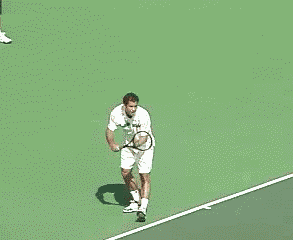
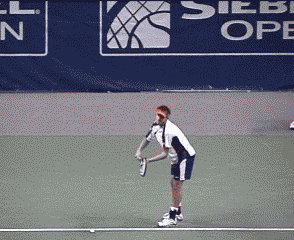
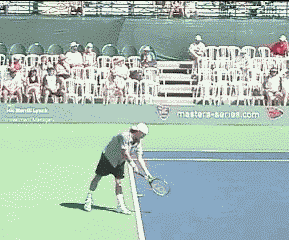
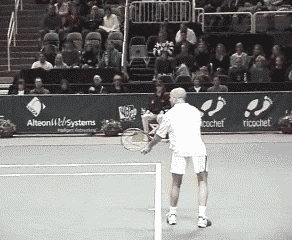
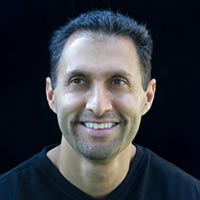 Feisal, a USPTA Master Professional, is a member of the Head/Penn Racquet Sports National Advisory Board and National Speaker’s Bureau, the Director of Certification & Testing for the USPTA Middle States division, and holds USPTA specialist degrees in Competitive Player Development, Facility Management and Little Tennis. He is also a USTA Recreation Coach National and Quickstart Trainer, a member of the National Cardio Tennis Speakers Team and the USPTA National Education Committee.
Feisal, a USPTA Master Professional, is a member of the Head/Penn Racquet Sports National Advisory Board and National Speaker’s Bureau, the Director of Certification & Testing for the USPTA Middle States division, and holds USPTA specialist degrees in Competitive Player Development, Facility Management and Little Tennis. He is also a USTA Recreation Coach National and Quickstart Trainer, a member of the National Cardio Tennis Speakers Team and the USPTA National Education Committee.